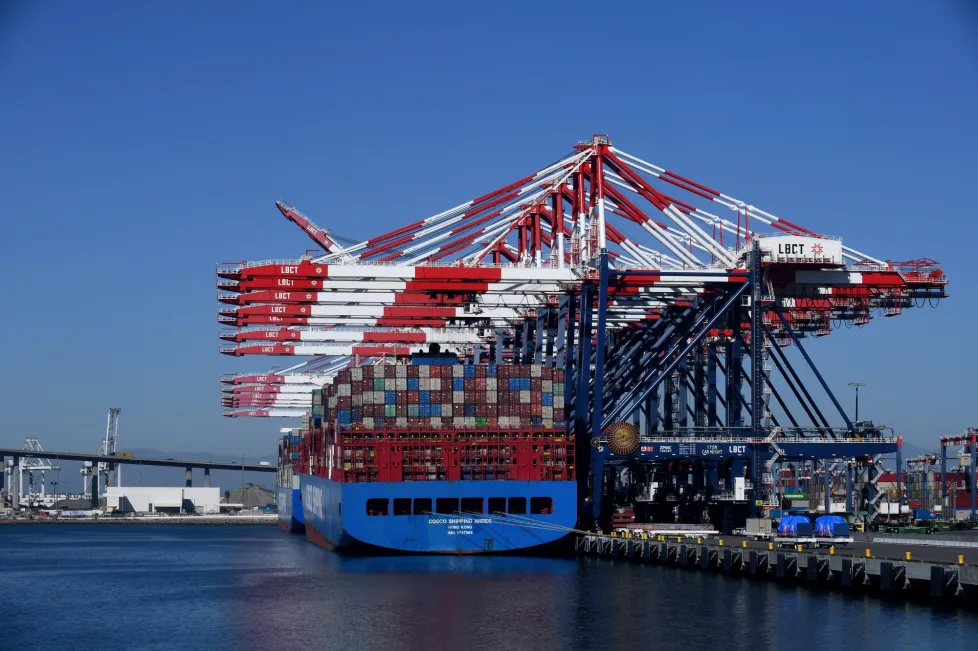
Long Beach Container Terminal: Leading the Way to Net Zero Amid Rising Shipments
The Long Beach Container Terminal (LBCT), one of the world’s largest and most advanced cargo-handling facilities, continues to make remarkable strides toward achieving its ambitious Net Zero goal by 2030. With an array of innovative initiatives and significant infrastructure upgrades, the terminal is setting a benchmark for sustainability in the shipping and logistics industry. A recently released report highlights LBCT’s progress, showcasing how environmental stewardship and economic growth can coexist harmoniously.
Driving Toward Net Zero
LBCT’s 2024 Net Zero Progress Report details a range of achievements and ongoing initiatives designed to slash emissions while enhancing operational efficiency. Among the key developments are:
- The addition of more electric ship-to-shore and rail cranes.
- Deployment of a zero-emission terminal truck fleet.
- Construction of a second battery charging and exchange facility.
- Significant investments in clean-energy technologies to support the terminal’s operations.
These advancements have positioned LBCT as a leader in environmental innovation, proving that the integration of green technologies can go hand in hand with improving cargo-handling capabilities.
“LBCT remains an attractive choice for shippers because we have incorporated clean-energy technologies while continuing to have the fastest Net Zero truck turn times, shortest vessel berth stays, and shortest rail dwell times of any terminal in San Pedro Bay,” said Anthony Otto, LBCT’s Chief Executive Officer. “We continue to meet or exceed emission regulations, promote safety, and create climate resiliency because of the incredible collaborative effort among our workers, the community, our elected officials, and our shipping customers and partners.

Community Investment and Workforce Development
In addition to its environmental initiatives, LBCT emphasizes its commitment to social responsibility by reinvesting in the Long Beach community. According to Otto, the terminal focuses on programs that:
- Provide job training and career opportunities for local youth.
- Assist underserved communities in the area.
- Enhance the overall environmental conditions of the region.
The terminal’s efforts also prioritize maintaining good-paying jobs and fostering strong partnerships with local labor organizations.
“LBCT cultivates trust among labor partners, with a commitment to training and upskilling the workforce to prepare for a zero-emission future,” said Tommy Faavae, Business Development Manager of IBEW Local 11. “LBCT ensures that any new zero-emission terminal equipment funded in collaboration with the federal government is human-operated and built by American manufacturers.”
This focus on workforce development not only supports the transition to cleaner technologies but also strengthens the local economy by creating sustainable jobs.
Progress in Numbers
The Net Zero Progress Report serves as a comprehensive Environmental-Social-Governance (ESG) document, detailing how LBCT is aligning with emerging emission-reduction regulations while making positive social impacts. The terminal’s achievements have not gone unnoticed; LBCT recently earned an impressive 96% score from GRESB, a leading international ESG ranking organization, placing it at the top among peer container ports.
Key highlights from LBCT’s journey include:
- A $2.5 billion, 15-year effort to transition cranes and cargo-handling vehicles to zero-emission electric equipment.
- An 86% reduction in greenhouse gas and criteria pollutant emissions to date.
- A fourfold increase in cargo-handling capacity while maintaining its environmental commitments.
Innovations in Clean Energy
LBCT continues to leverage cutting-edge clean-energy technologies to further its sustainability goals. The terminal relies on onshore power for docked ships, minimizing emissions while vessels are at berth. Additionally, LBCT has begun accommodating OOCL’s greener ships, such as the Bauhinia and the Sunflower, which represent a new generation of eco-friendly shipping vessels.
Joe Lyou, President and CEO of the Coalition for Clean Air, commended LBCT’s efforts: “LBCT continues to use onshore power for docked ships, is beginning to welcome OOCL’s greener ships – the Bauhinia and the Sunflower – and aggressively continues to serve as a model for clean terminal operations in the San Pedro Bay port complex and beyond.”
Looking Ahead
The terminal’s roadmap to Net Zero includes additional clean-energy initiatives aimed at further reducing emissions and enhancing sustainability. Among these efforts are:
- Expanding electric-charging infrastructure to support the growing fleet of zero-emission vehicles.
- Increasing clean-power generation and storage capacity to ensure a reliable energy supply for terminal operations.
- Collaborating with the Port of Long Beach to advance the Clean Air Action Plan, which aims to reduce emissions across the entire port complex.
- Influencing other industries to adopt decarbonization strategies by sharing best practices and technological advancements.
A Model for the Future
LBCT’s comprehensive approach to sustainability positions it as a global leader in clean terminal operations. By demonstrating that economic growth and environmental responsibility can coexist, the terminal is inspiring other organizations in the logistics and shipping sectors to follow suit.
As shipments at LBCT continue to rise, the terminal remains steadfast in its commitment to achieving Net Zero by 2030. Through innovation, community investment, and collaboration, LBCT is charting a course toward a cleaner, more sustainable future for the industry and the planet.







